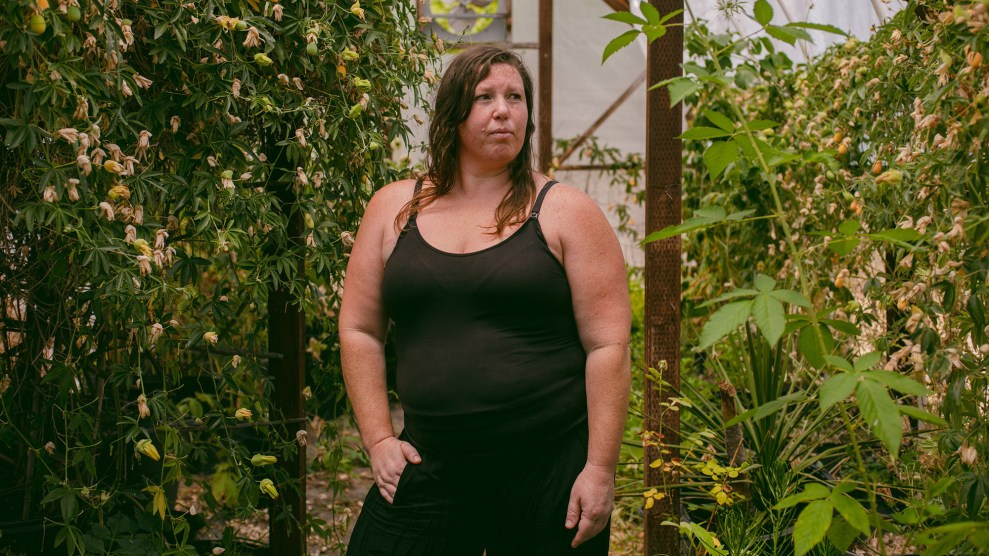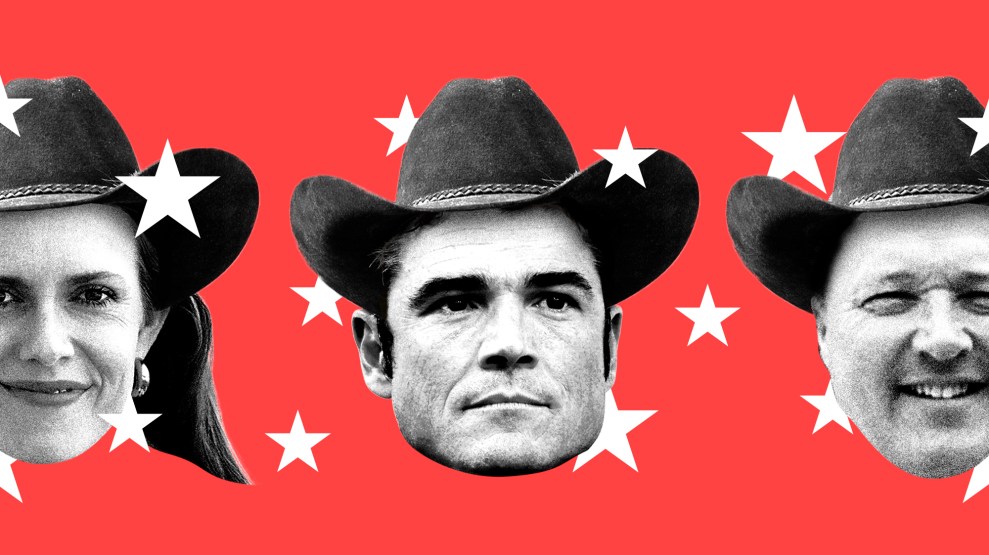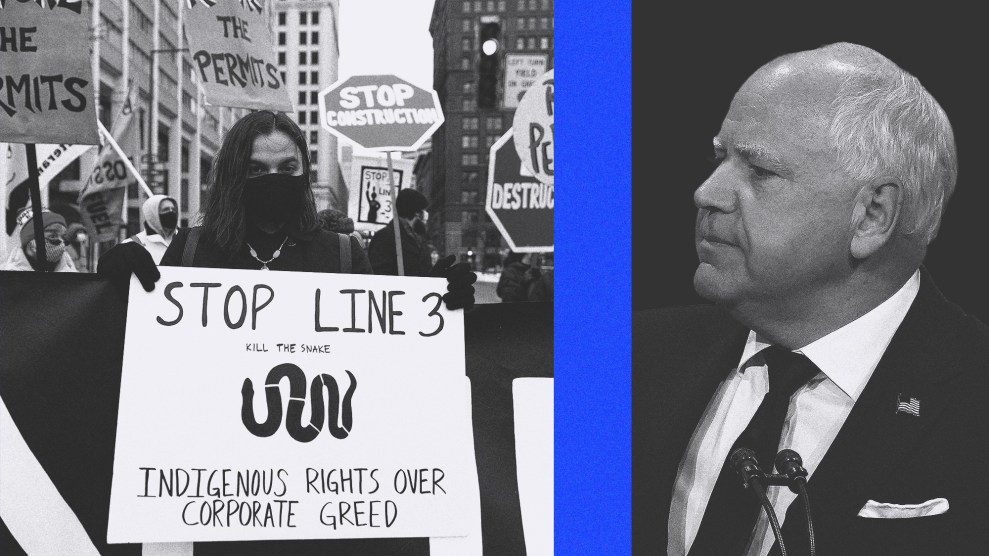Neva Sosh
I’m especially struck by Jones’ statement: “…I suffocated my deepest fears and desires under a nice-boy persona.” As the mother of a young woman who was suffocated also — not “by deep fears and desires,” but by being bound hand and foot, and having a zip-up plastic bag placed over her head — it probably goes without saying that I have a different view from him on the impact of violent media. Especially considering that a magazine and video were found in the perpetrator’s belongings depicting the exact thing done to my daughter. It’s very difficult for me to appreciate Jones’ gains from violent media, in light of my loss.
Gerard Jones responds:
I cannot conceive of how painful and terrible your loss must be. I have a son, and I know the agonies I go through whenever he suffers any injury or even a brush with near-injury. The pain and rage one must suffer at the loss of a child to violence is more than I can imagine. I want my child, and all children, to live, to be healthy and unhurt, and to be as happy as they can be. I hope my book can contribute to that end by helping all of us, parents and children, deal more effectively with the aggression around and within us.
However powerful our feelings, however, if we’re to engage in a discussion of violence that might really change things, it’s essential that we keep the issues we’re discussing clear and distinct. I’m not defending violent pornography. What I’m discussing as “violent media” is utterly different. I’m discussing the emotional and developmental value of the sorts of combative stories and games that millions of healthy, happy children are drawn to every day.
In our fear of real-life violence–however justified it may be–we too often lump together all manifestations of aggression as a single problem. We speak of video-game playing, action-movie watching, and playground karate chopping as “violence,” as if they were somehow the same as geniune acts of destruction. Pretend violence is not real violence. It doesn’t cause real violence. If we fail to keep real distinctions in mind, if we allow our emotions to blur the distinction between what is real and what is not, then we only make it harder to deal with real violence in a real way.
I hope fervently that the discussion this book opens up will not only help more children get their needs met through aggressive fantasy, but will also help us reduce the amount of real cruelty and destruction in the world.
Ellen Rosser
Jones begins with a false concept of human nature. Most people are not filled with rage. Rage is a reaction to abuse, and abuse is not a natural condition for children or adults. The Tasaday, the only food-gathering people still around in l971 when they were discovered in the rain forests in the Philippines, show us human nature as it is when it is not under stress and not misled by other people: The Tasaday have no word for war, no concept of doing harm to one another nor of sex outside of marriage, and their main concern is that the others be happy. They share everything although they have their own places in their caves. Both men and the women gather food and nurture the children. They are so happy that when they were asked what those investigating them could give them to make them happy, they replied, “But we are happy.”
Jones, I’m afraid, is dangerous because he is advocating teaching disturbed young people to imitate or at least adulate violent characters. He is like Aristotle, who believed that watching a tragedy would purge one’s emotions. But Plato said that children learn to do what they see others doing.
Certainly children need strong role models to help them cope with difficulties, but why must the role models be violent? Why not show children Gandhi or Dr. Martin Luther King or even their great teacher Jesus? Show the children very strong men who were non-violent and who accomplished marvelous things as a result.
Gerard Jones responds:
The Tasaday were a wonderful story that brought hope to many of us about human nature during one of the darkest passages of our society’s confrontation with violence. Unfortunately, the story wasn’t true. The Tasaday have turned out not to have been so isolated, nor so technologically primitive, nor so utopian in their language or society; the story seems, in fact, to have been just a hoax orchestrated by Manuel Elizalde, a self-serving bureaucrat of the corrupt, violent Marcos government. Don’t believe anything you read about the Tasaday prior to the American Anthropological Association reports of 1989.
It’s true that there are some small, simple, rather isolated societies in which war, crime, and violence are frowned on and very rare. However, there are far more small, simple, rather isolated societies in which war and violence are the virtual raison d’etre of male life: Papua New Guinea and the Amazon/Orinoco hinterlands are full of them. In fact, of all the societies known to us from anthropology and history, very few can surpass America and the rest of the industrialized world of the last fifty years in condemning warfare and eschewing violence in law enforcement, conflict resolution, and child rearing. Although there is too much violence in our society, one of the reasons we see it as too much is precisely the fact that we’ve generally agreed, as a culture, that violence is bad. I know it seems paradoxical, but it’s true: our culture is, ideologically at least, one of the most pacifist cultures in human history.
It’s just as pointless to say “human nature is peaceful” as it is to say “human nature is aggressive.” “Human nature” is as unknowable as the “natural human” of hundreds of thousands of years ago. I have not, and never will, try to say that aggression is something given to us by nature that nurture cannot overcome. Humans have shown an ability to make our societies just about whatever we want them to be, or need them to be; it’s possible that many generations hence we will even have turned our conflictive, competitive society into one as peaceful as we want to believe the Tasaday’s was.
But my concern is with the children in our world now, and the children who will be joining us in the near future. And that is not the world they are being given. They are being brought into a vast, complex, tumultuous society, and they respond to it quite appropriately with fantasies of being big and strong and able to fight back. We need to respect that.
We also need to respect the fact that they are children. They don’t–can’t–view the world exactly as we do. Anger isn’t simply a response to abuse. It’s also a very normal, often very productive, response to fear and feelings of powerlessness. And no matter how gently we treat our children, those feelings will inevitably accompany being young and little in a huge, complex, subtle, incomprehensible world. Nor is anger the only inspiration to power fantasies. It’s often when kids are happiest and least angry that they most wish they were invulnerable and omnipotent and able to do whatever they want–even destroy things.
It’s very important to teach children about people like Dr. King and Gandhi, but we also have to respect the fact that younger children will rarely be able to bond emotionally with those stories or draw much symbolic sustenance from them. Until a child is old enough to be capable of what Piaget called “formal operations,” the concept of nonviolence as a form of action, of heroism, will simply be abstract. After a kindergarten unit on Dr. King, my son and his classmates were asked to sum up what they’d learned. My son’s comment was, “Martin Luther King was a good man and now he’s dead and that’s too bad.” Which was pretty typical for the whole class. The message of nonviolence and self-sacrifice left nearly all the kids with a sense of sadness and loss–or indifference, since there was no way for the King story to seem relevant to the small, subjective world of a child. But that same afternoon, watching the Power Rangers beat up scaly monsters, my son experienced a visceral, triumphant, and emotionally relevant lesson in the ability of the courageous individual to overcome what’s scary and evil.
It’s not ultimately about role models. Like it or not, the most important role models of every child’s life are his or her parents. Or, if the child and parents haven’t bonded well, peers who step in and fulfill quasi-parental roles. Children really learn very little from the protagonists of movies, books, video games, or classroom lectures. But children learn a great deal from themselves when they engage in fantasy: from the emotions they experience and the imaginary selves they try on while playing a game or surrendering to a story.
The story is the key: the drama, the symbolism, the metaphor. And the metaphors of our culture are violent, because violence speaks powerfully to us. Even the pacifist traditions from which Gandhi and King developed their political philosophies are told largely in violent metaphor. Jesus was very clear on the fact that he brought not peace, but a sword; King’s own speeches are filled with Biblical metaphors of conflict and destruction; and Hinduism overflows with glorious images of slaughter and conquest and worlds laid waste. Even the stories of Dr. King and Gandhi themselves are, essentially, violent metaphors. The story of Jesus makes no dramatic sense without his crucifixion; the stories of Gandhi and King would not resonate with the power they do without their assassinations. And although they didn’t commit violence, Gandhi and King did invite and endure it. Had their opponents met their nonviolence with more nonviolence, there would be no story to inspire us. It is the violence in these stories of nonviolent resistance that enable the stories to have their symbolic power.
An episode of Power Rangers, obviously, is a much cruder and infinitely less edifying version of the symbol, but it is, at heart, the same symbol as the story of Gandhi and Dr. King. Good is accomplished by the courage to engage with violence. For a young child, morphing imaginatively into a Power Ranger is a far more helpful use of the symbol.
Beth Gallagher
We’re big fans of admittedly violent comics. My first-hand experience as a parent has taught me to share Jones’s opinion that this stuff is a great coping mechanism for powerless kids in a big, scary world.
However, I think it’s crucial to distinguish among the various types of violent or otherwise “antisocial” entertainment and to encourage (force, if necessary) a mix of play types. I do find that a too-steady diet of violent entertainment tends to bring out the worst in my son, if only temporarily. Thus I may not prohibit, but I will surely limit, my kids’ use of violent games like “Mortal Kombat.” Yes, we read Hulk and X-Men comics, but also nicey-nice stories about spiders meeting ladies in their gardens and about how the native Americans respected the earth.
“Gangsta rap” is an example of a form of violent entertainment I would not be OK with my small children using. Seeing and reading about big, horrible heroes who defend themselves and others using violent means? OK. This is *obviously* fantasy. But hearing someone gleefully describe and threaten rape and murder? I don’t think so. Hearing women repeatedly and almost exclusively referred to as bitches and hos? Uh, no. I’d like my son and daughter to at least wait until adolescence to discover the prevalence of misogyny and prejudice. Learning that some of these “entertainers” are also real-life perpetrators of the violent offenses they describe in their “entertainment”? That’s not the sort of company I keep, and I don’t intend to bankroll such people. I may well introduce my kids to this crap as they age, but I’ll do it the way I discuss the evening news with them: as evidence of the sad world we live in, as a warning to them, and maybe even as a call to action. All violent entertainment is not created equal!
Gerard Jones responds:
I agree completely about mixing play types, Beth. I don’t think it’s constructive for a kid to turn only to combative entertainment–although if that’s all he wants to turn to, I’d suggest not just forcing the inclusion of other stuff but also trying to figure out what’s going on with the kid (unresolved rage, fear, pain?) that keeps him so enmeshed in violent fantasy.
Kids need balance, and usually want it. When my son and his friends were at the peak of their Power Rangers craze they were also going crazy for the Teletubbies; in fact, my son combined them into a game called Tubby Rangers, in which those cuddly, fuzzy, ersatz babies would find their garden landscape invaded by monsters and would morph into superheroes in order to beat them back. It was the perfect way for him to be nurturing, nurtured, cute, harmless, regressive, loveable–and omnipotent and fearless at the same time.
I’m writing this book largely because I see kids being deprived of an important component of emotional balance by not having their aggressive fantasies acknowledged. One of the many things that gets overlooked in all this fuss over violent entertainment is that kids today are exposed to far more nonviolent entertainment than ever before. Once upon a time, the vast majority of stories people told were violent: heroic, scary, funny, or edifying, nearly all folk tales, myths, and popular stories turned one way or another on physical violence. There are many traditional antecedents for PokŽmon and Tomb Raider; few for the Berenstain Bears. It’s important that we see kids’ love of imaginary fighting and destruction as just one part of everything they love. Just one part, but a very important one.
I also agree with you about waiting, if possible, to expose kids to the kinds of rage and violence that exist in the real world. A CD isn’t going to shape a child’s values in any significant way: if mom respects herself, and dad or whoever else is involved in the family respects mom, and the little girls in the playgroups and the classrooms mostly respect themselves, then the kid is never going to grow up mistreating women no matter how many times he or she listens to Dr. Dre’s “Bitch Niggaz.” However, a child who is too young to understand the subjectivity of different people’s experiences might feel anxious and threatened to learn that some people feel enough anger that they would want to say such things.
On the other hand, older kids and adolescents generally do understand that kind of subjectivity, and can respond to gangster rap and equally angry forms in a completely vicarious way. The better hardcore rappers express a particular kind of personal strutting, an unbeatable defiance to a hostile world, more effectively than anyone else in popular culture; and most of their fans, both boys and girls, are able to transfer that strut vicariously to their personal adolescent conflicts without buying into any of the gender crap. Don’t expose your kids to the stuff if you think they’re too young–but if they discover it, like it, and want to listen to it, respect the fact that they’re getting something from it.
It’s always a good idea to try to engage your kids in a dialogue about the values inherent in their entertainment and make sure they know where you stand. Just be ready for them to have made the distinction between fantasy and reality on their own, long before. A few weeks ago a friend of mine heard her 13-year-old son listening to Eminem’s “Stan,” a very funny but disturbing song. After a couple of minutes of struggling through the anxieties it provoked in her, she finally came out with: “Jeff, it’s okay if you listen to that. But you know not to tie your girlfriend up and lock her in the trunk, right?” He rolled his eyes and said, “Yessssss.” And everyone was satisfied.
Read last week’s discussion on this topic.















